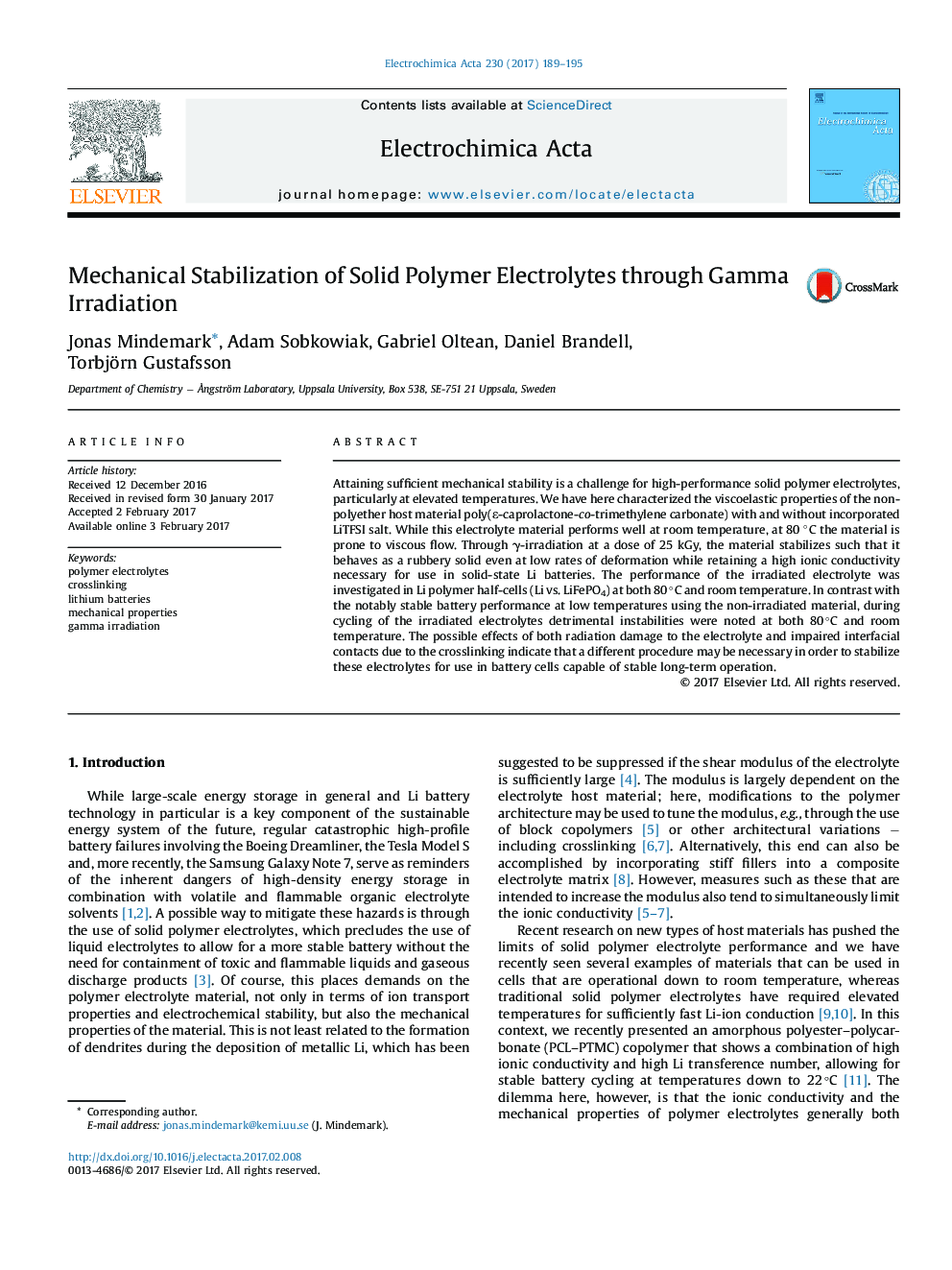| Article ID | Journal | Published Year | Pages | File Type |
|---|---|---|---|---|
| 6471373 | Electrochimica Acta | 2017 | 7 Pages |
â¢The mechanical properties of PCL-PTMC copolymer electrolytes are characterized.â¢Unstabilized electrolytes show viscous flow at low shear rates.â¢Î³-Irradiation effectively stabilizes the electrolytes through covalent crosslinking.â¢A high ionic conductivity is retained after moderate γ-treatment.â¢Li/LiFePO4 half-cells using the electrolytes are cycled at both r.t. and 80 °C.
Attaining sufficient mechanical stability is a challenge for high-performance solid polymer electrolytes, particularly at elevated temperatures. We have here characterized the viscoelastic properties of the non-polyether host material poly(ε-caprolactone-co-trimethylene carbonate) with and without incorporated LiTFSI salt. While this electrolyte material performs well at room temperature, at 80 °C the material is prone to viscous flow. Through γ-irradiation at a dose of 25 kGy, the material stabilizes such that it behaves as a rubbery solid even at low rates of deformation while retaining a high ionic conductivity necessary for use in solid-state Li batteries. The performance of the irradiated electrolyte was investigated in Li polymer half-cells (Li vs. LiFePO4) at both 80 °C and room temperature. In contrast with the notably stable battery performance at low temperatures using the non-irradiated material, during cycling of the irradiated electrolytes detrimental instabilities were noted at both 80 °C and room temperature. The possible effects of both radiation damage to the electrolyte and impaired interfacial contacts due to the crosslinking indicate that a different procedure may be necessary in order to stabilize these electrolytes for use in battery cells capable of stable long-term operation.
Graphical abstractDownload high-res image (81KB)Download full-size image
